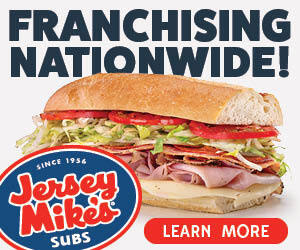Keep Your Eyes on the Dashboard: Monitoring the Indicators that Drive Success

Owners with investments in multiple states learn to lead from afar with management depth. This may include store managers and district managers who are accountable for the profitable growth of locations in their regions. To keep the team on track, clear goals, communication, and management structures are essential. But having goals is not enough.
Strong financial performance starts with the right monthly dashboard. The low-hanging fruit for monitoring financial results includes sales, gross profit margin, marketing spend, operating profit, accounts receivable, and accounts payable aging.
While these are easy to measure, they are lagging indicators. To change the results, you must focus on the leading indicators, the activities that drive success.
Growth is not optional, thus unit sales is always an appropriate focus. But you can’t manage sales. You can only manage the activities that drive sales. There are three basic ways to increase sales: 1) attract more customers, 2) get current customers to buy more frequently, and 3) increase transaction value.
Your dashboard should measure the true leading indicators:
- Selling activities—leads and conversions by lead source, customer growth by channel
- Marketing activities—ground game, digital marketing, networking, cost per lead, new customer acquisition cost
- Customer satisfaction—Net Promoter Score, retention, transaction frequency, range of services consumed
- Transaction value—average ticket, units per transaction, item growth, and average item price
- Production efficiency—sales per labor hour, overtime management, revenue per vehicle
During your strategic planning process, select metrics for your dashboard that measure your business priorities. The metrics you choose will become the voice of your business, giving you and your team feedback on your performance toward the goals and priorities.
Know your benchmarks
A benchmark is a point of reference that provides perspective, preferably one that comes from outside your four walls. Choose a benchmark that answers the question, “What is a good number?” or “What do the best in the business achieve?” Franchisees have a competitive advantage when system-wide results are available. Ask for the franchise benchmarks for your key leading and lagging indicators and use them to gain perspective on your results.
Accountability meetings
Monthly meetings to review the dashboard provide a structure for accountability and professional development opportunities for your managers. Review progress against monthly goals using your dashboard. Use charts and graphs so everyone can quickly comprehend unit and team performance. Help your team identify profit leaks and support each other to develop solutions and overcome roadblocks. If they need training on the financial side of the business to be effective, help them get it.
Without the discipline of regular check-ins, teams lose traction with their goals. You will be amazed at how much progress people make toward their commitments the day before the meeting! If the meetings are getting stale, liven them up. Don’t consider skipping them—create and stick to a standing monthly appointment on everyone’s calendar.
Coach them up
Starting on a positive note encourages engagement and establishes a constructive atmosphere. Use an icebreaker that builds personal connections or ties to the main meeting topic. This will break your team’s preoccupation with their latest distraction and set a tone of collaboration. Ask managers to share wins they experienced since the last meeting. Research shows that remembering a successful time from our past engages the part of the brain that helps with creative problem-solving.
Then get to the good stuff, your SMART (specific/measurable/ambitious/realistic/with timeline) goals. Multi-unit groups benefit from goal-setting disciplines that require collaborative planning and commitments and periodic accomplishments. Encourage traction with written calls to action. The meeting is where the dashboard and the CTAs converge. Team members update the group on their results and progress. Don’t allow excuses. If people seem stuck, ask the group for input.
Don’t lose focus on the dashboard. This does not mean “recite numbers at the meeting.” Instead, use open-ended questions aimed at the dashboard to spark productive conversations. Ask team members who met their goals to share what worked. If they are vague—they probably will be—ask clarifying questions to help them get specific.
Invite the team to share challenges too. If they aren’t meeting their goals and don’t volunteer to talk about it, consider how you can open the discussion without putting someone on the spot. When you have cultivated a culture of collaboration, support, and accountability, managers are more likely to engage. They will feel more comfortable discussing a challenge they bring forward compared with one you identify. Open-ended questions are your friend. And remember not to start with “Why?” Don’t ask, “Why are your sales falling?” Instead ask, “What do you think is getting in the way of a winning sales month?”
Stay in the lanes
Your dashboard tells you if you’re staying in the lanes defined by your goals. It’s a great tool for giving you and your team feedback. (Are you on or off course?) But it will not keep you in the lanes. That takes collaboration, motivation, skills, support, and coaching.
If coaching your team to peak performance is not your forte, consider improving your leadership skills. The skills of a “natural born leader” can be learned. If you don’t have the appetite for that, hire or promote a leader to provide the structure and support for your team. How you provide the culture and structure your team needs is up to you. But setting goals is just the beginning.
Barbara Nuss is the president and founder of Profit Soup, a financial training firm specializing in providing developing skills for franchisors and franchisees that enable them to trust their numbers, focus on priorities, make better decisions, and earn more profit. Visit profitsoup.com.
Share this Feature
Recommended Reading:
FRANCHISE TOPICS
- Multi-Unit Franchising
- Get Started in Franchising
- Franchise Growth
- Franchise Operations
- Open New Units
- Franchise Leadership
- Franchise Marketing
- Technology
- Franchise Law
- Franchise Awards
- Franchise Rankings
- Franchise Trends
- Franchise Development
- Featured Franchise Stories
FEATURED IN

Multi-Unit Franchisee Magazine: Issue 4, 2023

$61,440
$500,000





 The multi-unit franchise opportunities listed above are not related to or endorsed by Multi-Unit Franchisee or Franchise Update Media Group. We are not engaged in, supporting, or endorsing any specific franchise, business opportunity, company or individual. No statement in this site is to be construed as a recommendation. We encourage prospective franchise buyers to perform extensive due diligence when considering a franchise opportunity.
The multi-unit franchise opportunities listed above are not related to or endorsed by Multi-Unit Franchisee or Franchise Update Media Group. We are not engaged in, supporting, or endorsing any specific franchise, business opportunity, company or individual. No statement in this site is to be construed as a recommendation. We encourage prospective franchise buyers to perform extensive due diligence when considering a franchise opportunity.